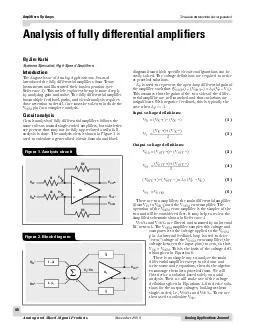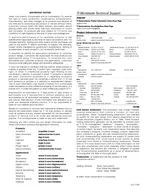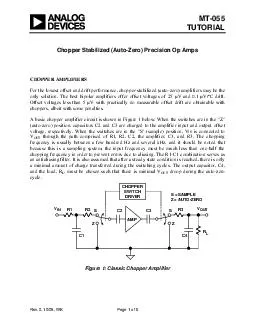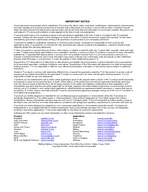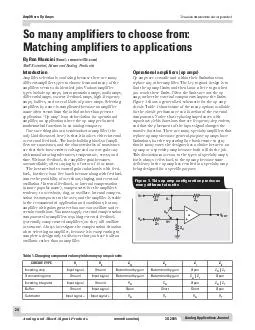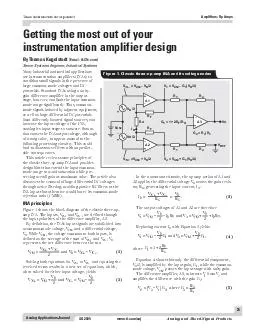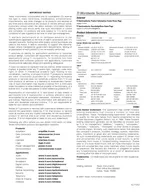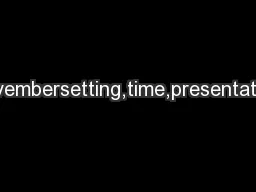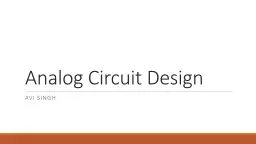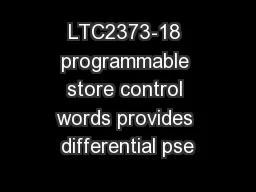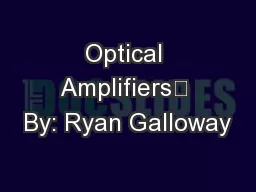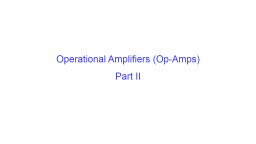PDF-Analog Applications Journal Analog and MixedSignal Products November Analysis of fully
Author : ellena-manuel | Published Date : 2014-12-14
This article explores the topic more deeply by analyzing gain and noise The fully differential amplifier has multiple feedback paths and circuit analysis requires
Presentation Embed Code
Download Presentation
Download Presentation The PPT/PDF document "Analog Applications Journal Analog and M..." is the property of its rightful owner. Permission is granted to download and print the materials on this website for personal, non-commercial use only, and to display it on your personal computer provided you do not modify the materials and that you retain all copyright notices contained in the materials. By downloading content from our website, you accept the terms of this agreement.
Analog Applications Journal Analog and MixedSignal Products November Analysis of fully: Transcript
Download Rules Of Document
"Analog Applications Journal Analog and MixedSignal Products November Analysis of fully"The content belongs to its owner. You may download and print it for personal use, without modification, and keep all copyright notices. By downloading, you agree to these terms.
Related Documents

